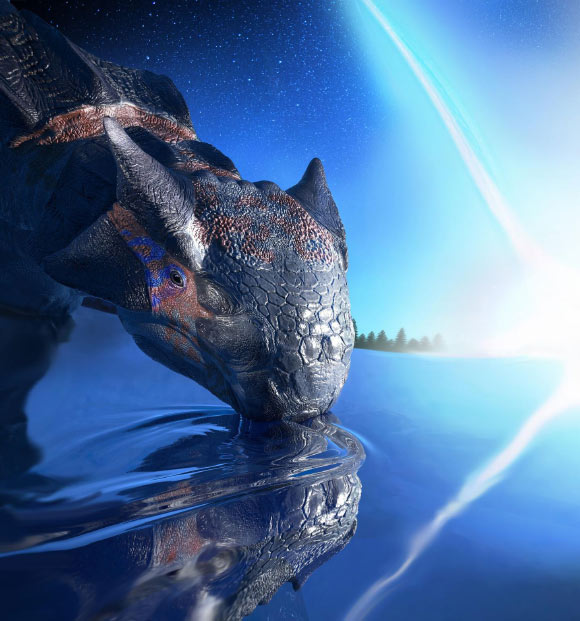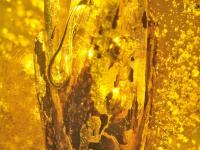Dinosaur-Killing Chicxulub Asteroid Came from Outer Part of Main Belt, Study Suggests

A team of planetary scientists from the Department of Space Studies at the Southwest Research Institute has combined computer models of asteroid evolution with observations of known asteroids to investigate the frequency of so-called Chicxulub events.
At the end of the Cretaceous period, about 66 million years ago, a 10-km impactor crashed into Earth near the site of the small town of Chicxulub in what is now Mexico.
The impact unleashed an incredible amount of climate-changing gases into the atmosphere, triggering a chain of events that led to the extinction of non-avian dinosaurs and 75% of life on the planet.
Over the last several decades, much has been learned about the Chicxulub event, but every advance has led to new questions.
“Two critical ones still unanswered are: ‘What was the source of the impactor?’ and ‘How often did such impact events occur on Earth in the past?’” said Dr. William Bottke, co-author of the study.
The Chicxulub impactor was similar to the carbonaceous chondrite class of meteorites, some of the most pristine materials in the Solar System.
Curiously, while carbonaceous chondrites are common among the many large bodies that approach the Earth, none today are close to the sizes needed to produce the Chicxulub impact with any kind of reasonable probability.
“We decided to look for where the siblings of the Chicxulub impactor might be hiding,” said Dr. David Nesvorný, lead author of the study.
The researchers used computer models that track how objects escape the main asteroid belt, a zone of small bodies located between the orbits of Mars and Jupiter.
Over eons, thermal forces allow these objects to drift into dynamical ‘escape hatches’ where the gravitational kicks of the planets can push them into orbits nearing Earth.
Using NASA’s Pleaides Supercomputer, they followed 130,000 model asteroids evolving in this slow, steady manner for hundreds of millions of years.
Particular attention was given to asteroids located in the outer half of the asteroid belt, the part that is furthest from the Sun.
To their surprise, the scientists found that 10-km-wide asteroids from this region strike the Earth at least 10 times more often than previously calculated.
“This result is intriguing not only because the outer half of the asteroid belt is home to large numbers of carbonaceous chondrite impactors, but also because the team’s simulations can, for the first time, reproduce the orbits of large asteroids on the verge of approaching Earth,” said Dr. Simone Marchi, co-author of the study.
“Our explanation for the source of the Chicxulub impactor fits in beautifully with what we already know about how asteroids evolve.”
Overall, the authors found that 10-km-wide asteroids hit the Earth once every 250 million years on average, a timescale that yields reasonable odds that the Chicxulub crater occurred 66 million years ago.
Moreover, nearly half of impacts were from carbonaceous chondrites, a good match with what is known about the Chicxulub impactor.
“This work will help us better understand the nature of the Chicxulub impact, while also telling us where other large impactors from Earth’s deep past might have originated,” Dr. Nesvorný said.
The findings appear in the journal Icarus.
_____
David Nesvorný et al. 2021. Dark primitive asteroids account for a large share of K/Pg-scale impacts on the Earth. Icarus 368: 114621; doi: 10.1016/j.icarus.2021.114621
Source: www.sci-news.com/








